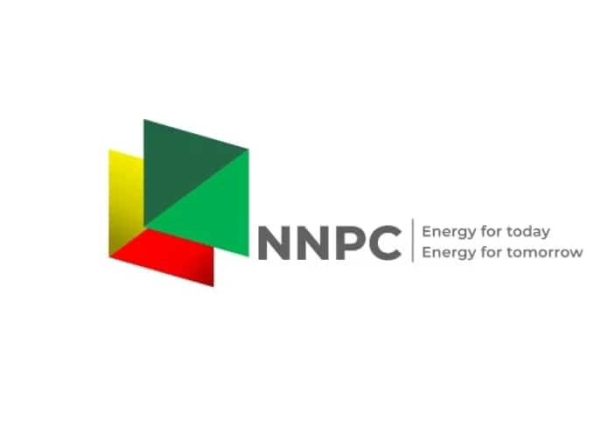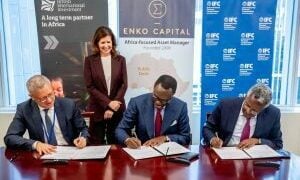The Nigerian National Petroleum Company Limited (NNPCL), Nigeria’s state-owned oil company, has reported a sustained decline in its profitability over the first nine months of 2025, with Profit After Tax (PAT) plunging by N834 billion in five months, between May and September.
The company disclosed in its September report that it recorded a profit after tax of N216 billion in September 2025.
This marks a 71 per cent slump from the N1.05 trillion peak recorded in May 2025.
The downturn was underscored by fluctuating monthly profits: from N748 billion in April, surging to N1.05 trillion in May, then falling to N905 billion in June, before sharply declining to N185 billion in July. August saw a recovery to N539 billion, but the substantial drop again followed this in September.
The September PAT figure also included adjustments for cost of sales and income tax, alongside operational challenges.
The national oil firm also announced a total revenue of N4.26 trillion in September, a decline from the N4.654 trillion recorded in August 2025.
The report showed that the monthly crude oil and condensate production was 1.61 million barrels per day. Of this total, crude oil production was 1.37 mmbpd, down from 1.38 mmbpd recorded in August. The total condensate was 0.24 mmbpd, down from 0.26 mmbpd in August.
Also, natural gas production stood at 6,284 mmscfd in September, while sales were 3,443 mmscfd. This sales volume decreased from 4,201 mmscfd in August.
“The PAT recorded in September included adjustments to cost of sales and income tax,” the report stated.
The decline could be linked to the recorded decline in crude oil production in September, which followed the three-day industrial action of the Petroleum and Natural Gas Senior Staff Association (PENGASSAN).
Recall that the NNPC’s GCEO, Bayo Ojulari, had disclosed that Nigeria lost 200,000 barrels per day of crude oil to the recent strike action embarked upon by the nation’s oil workers, culminating in a total of over 600,000 barrels during the three-day supply disruption.
He said, “I think it was unfortunate that the Dangote and PENGASSAN issue led to a strike. Whenever there is a strike, critical staff manning critical facilities are not available, and optimum production is almost impossible.
“In this case, we lost significant production of over 200,000 bpd that was deferred.
“We also have gas production that was deferred, we also have power generation that was impacted by about 1.2 megawatts of power that was affected by that strike,” he said.
Meanwhile, the report showed that the NNPC transferred N10.07 trillion to the federation account in the first eight months of 2025.
The figure, disclosed in NNPC’s September 2025 monthly report, represents the company’s statutory payments between January and August 2025.
According to provisional data in the company’s monthly summary, NNPC also reported N4.27 trillion in group revenue and N216 billion in profit after tax for the period. The results include adjustments to the cost of sales and income tax.
The surge was supported by higher crude prices, improved production levels, and stronger gas sales.
According to the report, average crude oil and condensate production held steady at 1.61 million barrels a day (bpd) in September, slightly below August’s 1.64 million bpd.
Production peaked at 1.77 million bpd earlier in the year before moderating amid maintenance at the Nigeria LNG plant and delayed start-ups at Oil Mining Leases (OMLs) 71 and 72.
The state energy firm stated that output has been supported by “industry-wide collaboration and production recovery initiatives.” However, challenges persist in curbing crude theft and vandalism in the Niger Delta.
Natural gas production averaged 6.28 billion standard cubic feet per day (scf/d) in September, down from about 6.95 billion in August, reflecting temporary maintenance slowdowns. NNPC said progress on the Ajaokuta–Kaduna–Kano (AKK) and Obiafu–Obrikom–Oben (OB3) pipelines remains on track, with the AKK now 88 per cent complete.
Brent crude prices averaged around $65 a barrel during the third quarter, while Nigeria’s output recovery helped offset weaker refining margins and high domestic distribution costs.
The company, now operating under the Companies and Allied Matters Act, has emphasised a commercial turnaround since its incorporation in 2021, reducing inter-agency leakages and accelerating payment timelines to the federation.
According to the report, pipeline uptime across upstream operations averaged 96 per cent in September, reflecting fewer disruptions from sabotage or leaks. Security collaborations with the Nigerian military and local surveillance groups have significantly reduced downtime in the Niger Delta.
Also, NNPC Retail Ltd sustained 77 per cent petrol availability across its filling stations nationwide, signalling steady supply despite market disruptions following subsidy reforms. The company has also expanded the NNPC-branded network to more rural locations to improve fuel accessibility.
If current remittance trends hold, analysts say NNPC’s total payments could exceed N15 trillion by year-end, providing a crucial cushion for government finances and external reserves.
The company said it sustained industry-wide collaboration and drove production recovery initiatives. It added that production levels during the period were temporarily moderated due to planned maintenance activities, including those at NLNG, alongside the phased recovery of previously shut-in assets and delays in the commencement of operations at OMLs 71 and 72.
The company noted that substantial progress has been recorded regarding the Ajaokuta-Kaduna-Kano (AKK) Gas Pipeline, as sustained focus is directed towards completing the mainline works.
Also, on the Obiafu-Obrikom-Oben (OB3) Gas Pipeline, the implementation of the revised execution strategy is underway to ensure delivery within the target timelines.
The report indicated that a 113km portion of the OB3 Gas Pipeline has been commissioned and is flowing circa 300mmscf/d of gas from gas producers, including AHL (250mmscf/d) and Platform, Chorus & Xenergi (50mmscf/d).





